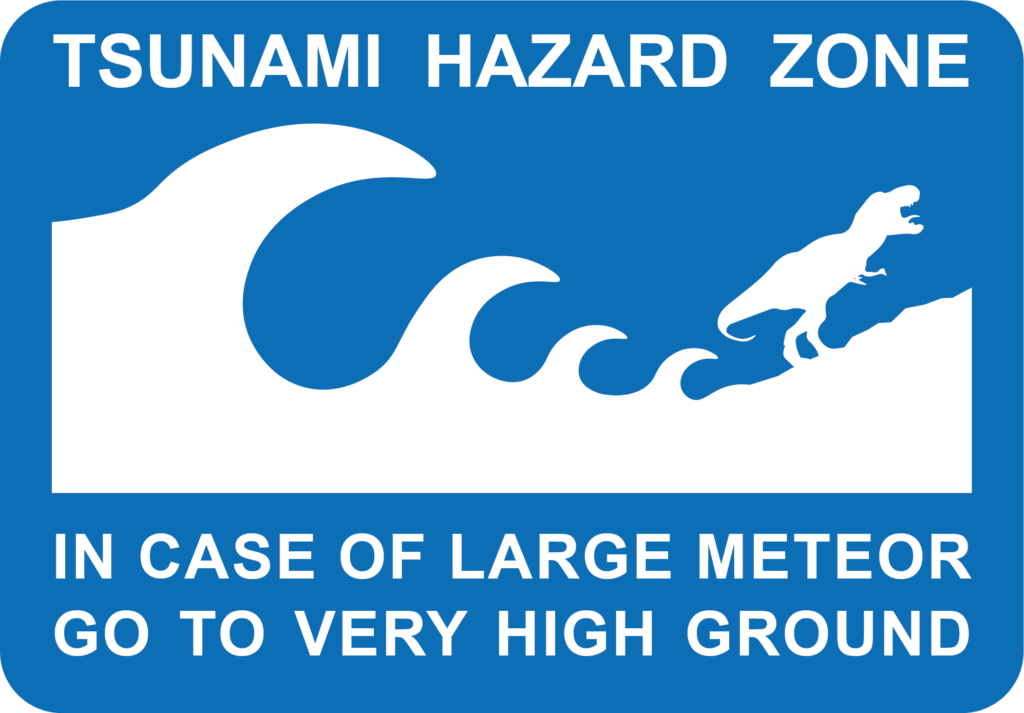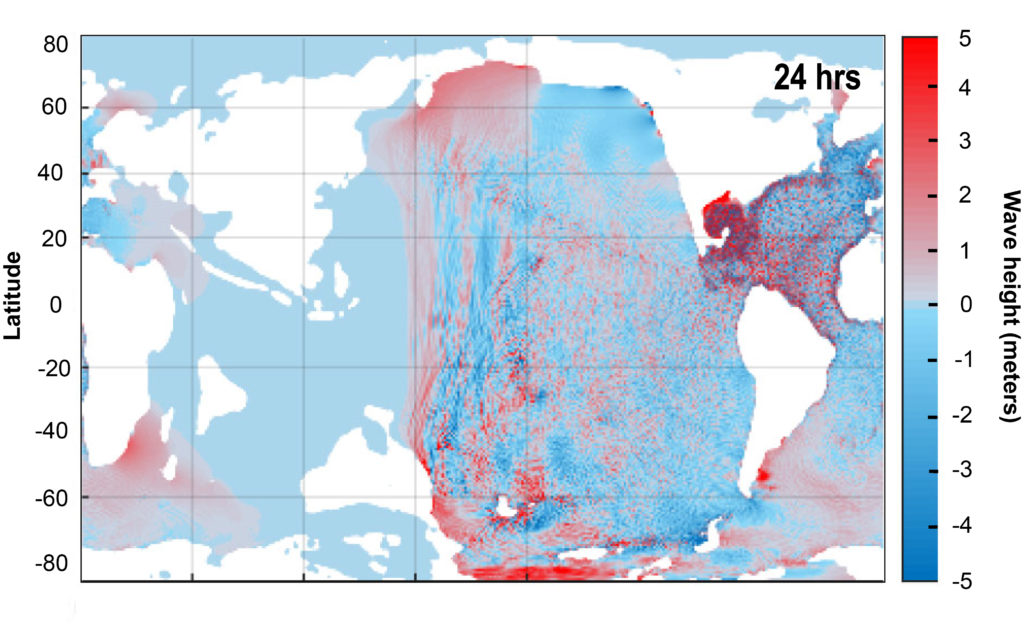
The asteroid that hit at the end of the Cretaceous period likely caused a massive global tsunami which, at its peak, was over a mile high, according to a new study published in AGU Advances. Credit: Nikolas Midttun
The asteroid that struck Earth and led to the Cretaceous-Paleogene (K-Pg) mass extinction 66 million years ago also triggered a worldwide tsunami that started as a wave more than a mile high, according to a new study. The tsunami was large enough to scour the ocean floor thousands of miles from the impact site on Mexico's Yucatán Peninsula.
The study, published today in AGU Advances, presents the first global simulation of the Chicxulub impact tsunami to be published in a peer-reviewed scientific journal, corroborated by an exhaustive new compilation of geologic sites that hold evidence of a massive, global tsunami.
Their models indicated that open-ocean wave heights in the Gulf of Mexico would have exceeded 300 meters (984 feet) about one hour after the impact, with maximum wave heights generally decreasing with time and distance from impact. The authors calculated that the initial energy in the tsunami was up to 30,000 times larger than the energy in the December 2004 Indian Ocean earthquake tsunami, which is one of the largest tsunamis in the modern record. Based on the models, the tsunami would have dissipated in less than a week.
"Any historically documented tsunamis pale in comparison with such global impact," the authors wrote.
To cross-check their models with geologic evidence, the authors examined 120 geological sites from before and after the asteroid impact and found evidence of a global tsunami, arriving as far away as what is now New Zealand. They compared those sediments to the waves and erosion predicted by their models.
"This tsunami was strong enough to disturb and erode sediments in ocean basins halfway around the globe, leaving either a gap in the sedimentary records or a jumble of older sediments," said lead author Molly Range, a physical oceanographer at the University of Michigan. "The distribution of the erosion and hiatuses that we observed in the uppermost Cretaceous marine sediments are consistent with our model results, which gives us more confidence in the model predictions."
"The geological evidence definitely strengthens the paper," said Brian Arbic, a physical oceanographer at the University of Michigan and study co-author.
Of special significance, according to the authors, are outcrops of the K-Pg boundary on the eastern shores of New Zealand's North and South Islands, which are more than 12,000 kilometers (7,500 miles) from the Yucatán impact site.
The heavily disturbed New Zealand sediments were originally thought to be the result of local tectonic activity. But given the age of the deposits and their location directly in the modeled pathway of the Chicxulub impact tsunami, the team suspected a different origin.
"We feel these deposits are recording the effects of the impact tsunami, and this is perhaps the most telling confirmation of the global significance of this event," Range said.
While the study did not explicitly model coastal flooding, wave heights could have approached more than 10 meters (32.8 feet) as the tsunami neared North Atlantic coastal regions and parts of South America's Pacific coast. North Atlantic coastal regions and parts of South America's Pacific coast.
As the tsunami neared those shorelines and encountered shallow bottom waters, wave heights would have increased dramatically through a process called shoaling. Such heights could well have caused substantial flooding, and a future study from some authors on the study will explore that process.

Modeled tsunami sea-surface height perturbation, in meters, 24 hours after the asteroid impact. Credit: AGU Advances






